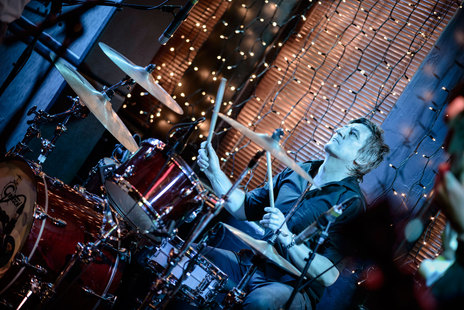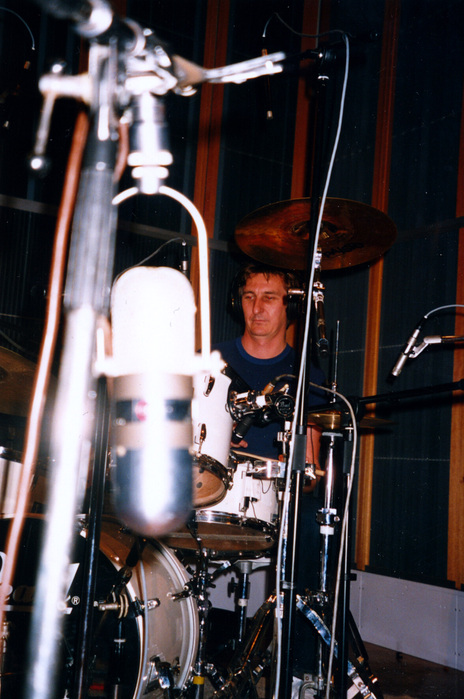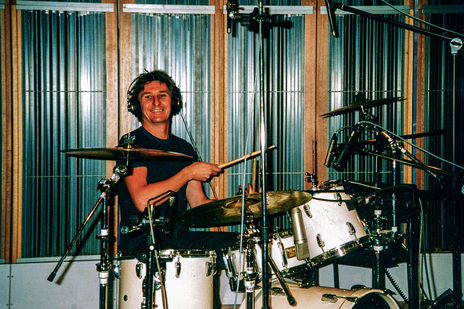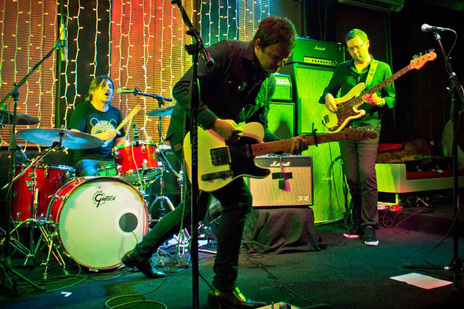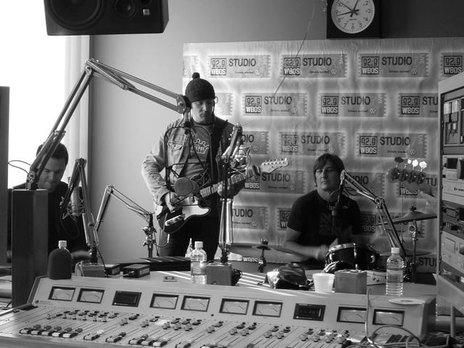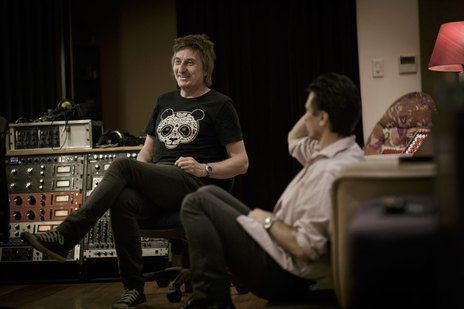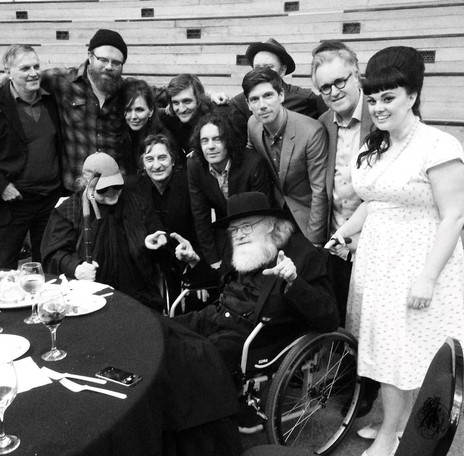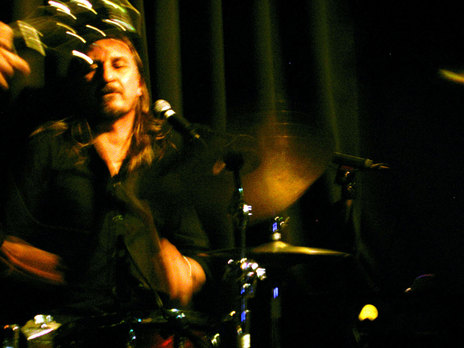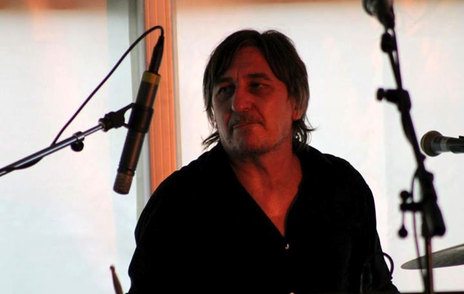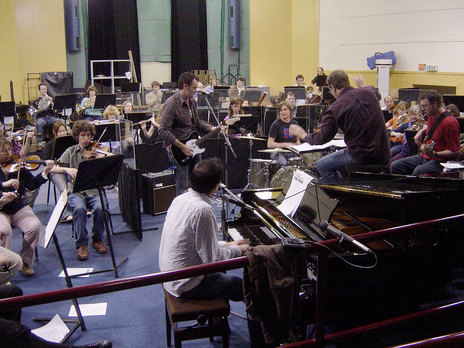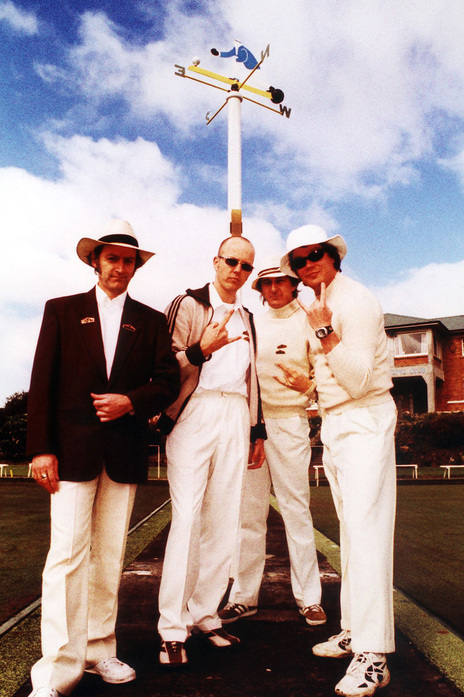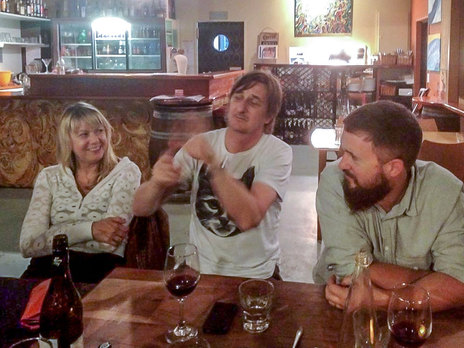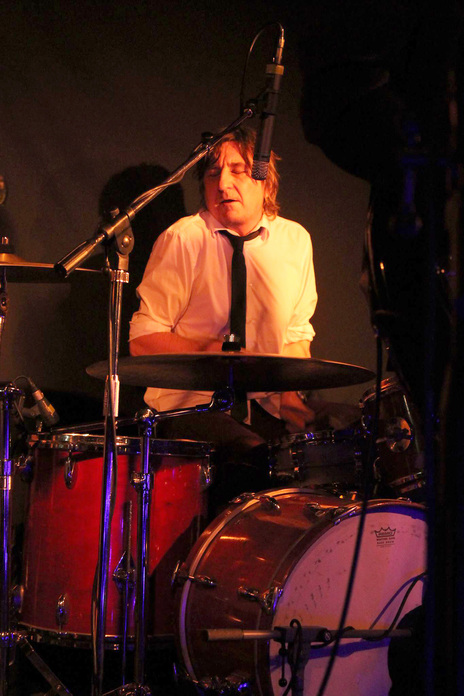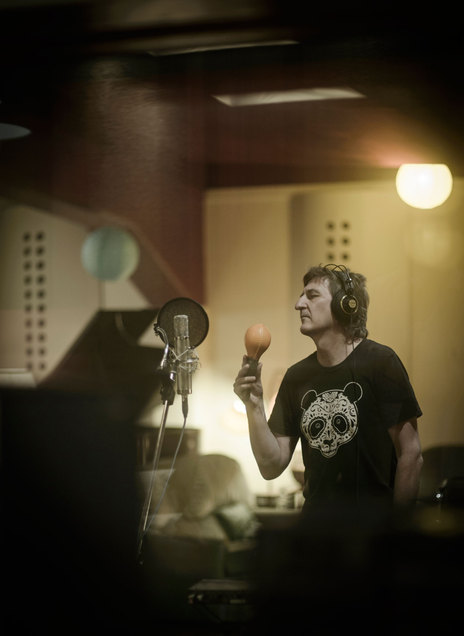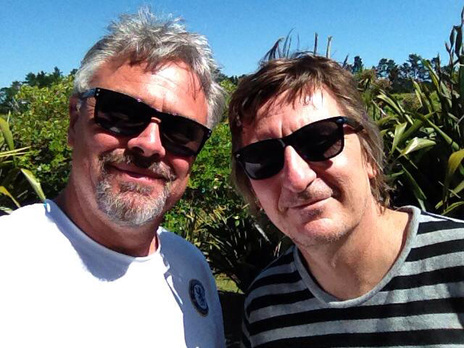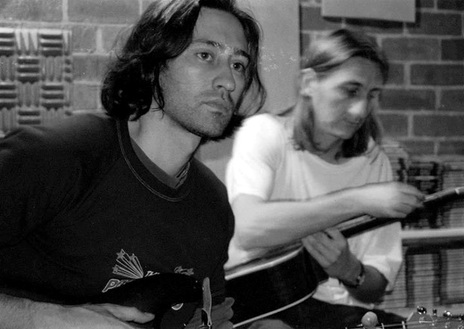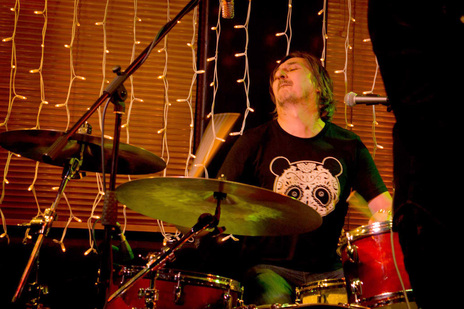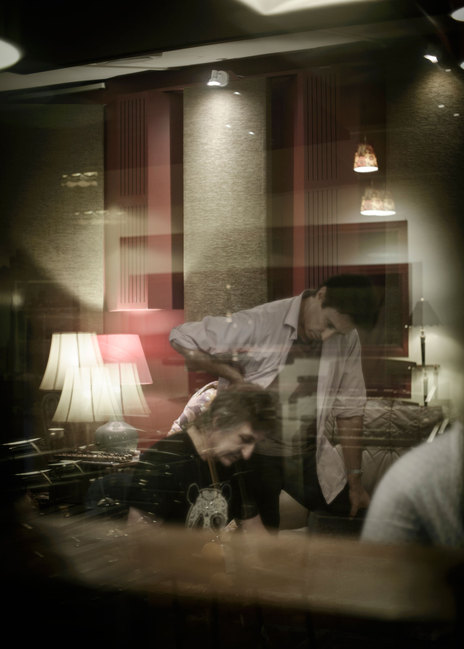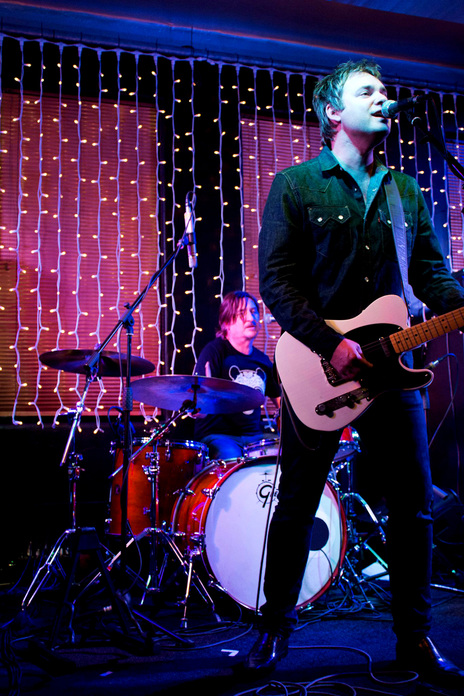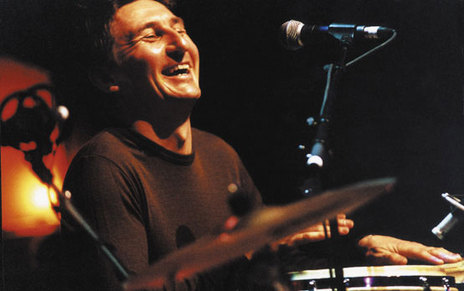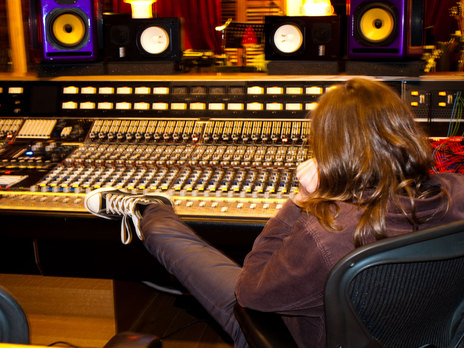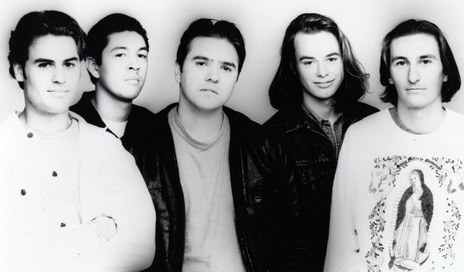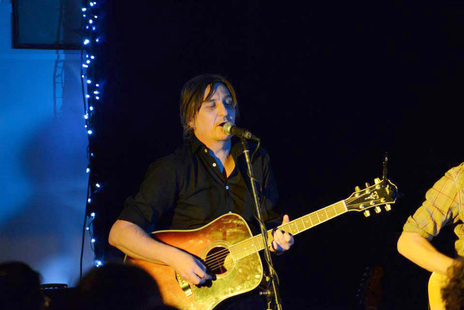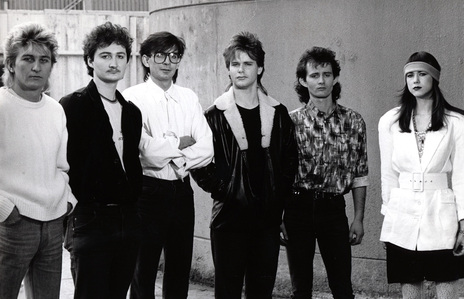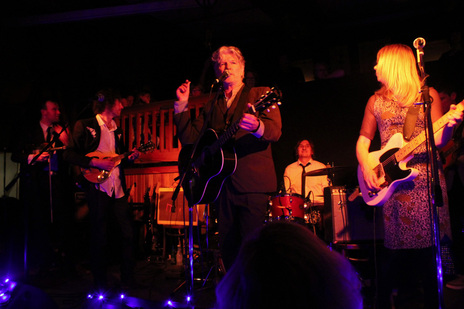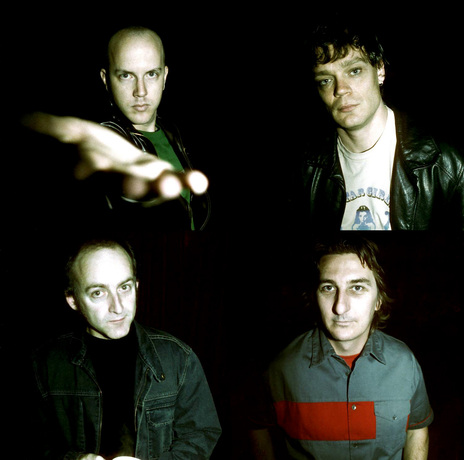Wayne Bell spent his early years growing up in Warkworth, north of Auckland. He was inspired to pick up the drum sticks when he was 11 years old, by one of his older sister’s "cool boyfriends", who lent him a drum kit and showed him a few tips and techniques. He went on to play obsessively for 12 hours a day.
“I remember bashing the hell out of that kit in the garage, driving the neighbours crazy. I soon started playing in various local covers bands when I was pretty young – my first paid gig was at the Three Furlongs hotel in Kaiwaka. Dad drove me there and picked me up afterwards; I would have been about 13.”
A little later, Wayne met jazz pianist Neil Totty, who was at the time, MD for the Mercury Theatre. Neil had a house in Puhoi with a grand piano and a huge collection of jazz records. Neil introduced Wayne to jazz. “He started playing me these records – I was listening to Elvin Jones, Art Blakey, Max Roach and Tony Williams and I just fell in love with that music.”
"Playing jazz at that time has left a mark on my drumming style, production values and even creeps into my songwriting at times.”
– Wayne Bell
Wayne began playing drums with Neil Totty and later on, saxophonist Jim Langabeer. They gigged around Warkworth and then began a residency at The Melba in Auckland, playing there three or four times a week and regularly at Café 161 on Ponsonby Road. Wayne says of that time, “I was about 16 years old, so eager to learn and to hear this great music, I was easily moulded and took to jazz – I‘m not sure if I was any good though. I eventually started listening to a lot more alternative pop bands, but I do think that playing jazz at that time has left a mark on my drumming style, production values and even creeps into my songwriting at times.”
Wayne had been spending so much time in Auckland, that when he finished his apprenticeship as an electrician in 1982, a move to the city was inevitable. After responding to a “drummer wanted” advertisement in the NZ Herald, he joined recently relocated Wellingtonian Mike Scorey’s Clash-inspired band, The Innocent, along with bass player Lee Cooper and guitarist Johnny Callander. “Mike is a great songwriter, so it was a great first band to play in," says Bell. "We played so many gigs, we supported bands all over the country, working three or four nights a week.”
He began working at the Mercury Theatre as a sound and lighting tech. “It was an exciting time. Auckland in 1982-1983 was very vibrant and busy musically. There were all the mainstream bands like The Pink Flamingos, The Legionnaires, Street Talk, DD Smash playing regularly, but there was also this underground scene, which could be pretty scary – vibrant, but had a real edge to it.”
It was around this time that Wayne started to rehearse with a band led by songwriter Colin Budd, called Gun Crazy. Lisle Kinney was the bass player in this band, and Peter Harrison completed the line-up on keys. The band rehearsed in St Georges Bay Road in Parnell, in a collective space shared by bands, artists and potters, it was a unique set up – Rick Bryant’s Jivebombers, John Molloy’s Top Scientists, and The Neighbours with Trudi Green also rehearsed there. It was at these rehearsal rooms that Wayne met members of Everything That Flies (Dianne Swann, Bruce and Clive Sheridan and Peter Harrison) and was asked to join.
His first gig with ETF was to perform in the video for their first single ‘Bleeding Hearts’. This was the first video for director Kerry Brown, and the crew was made up of a pretty impressive list of names from the film industry including Ngila Dickson, who styled the video, and Stuart Dryburgh, who was director of photography (DOP).
Wayne was steadily gaining a reputation as one of the best live drummers in Auckland and he was asked to join the newly formed When The Cat's Away.
The video was shown on Radio With Pictures with a great introduction and rave review from Karyn Hay. Through this exposure the band was offered some very high profile gigs, including a nationwide support for Icehouse and a slot on the first-ever live simulcast, “live-aid” style Rock On New Zealand. Wayne remembers, “The sound was appalling, it was our first ever live show, and it was televised to the whole country.” The band released two EPs and toured the country extensively throughout 1985 and 1986.
Wayne was steadily gaining a reputation as one of the best live drummers in Auckland and he was asked to join the newly formed When The Cat's Away. The success of this band is well documented, and it was here that Wayne was introduced to the “next level” of playing, and exposure to New Zealand audiences. He spent the rest of the 1980s as an in-demand drummer playing all over New Zealand with When The Cat’s Away, Dave McArtney and Midge Marsden.
In 1990, he was invited to join Dave Dobbyn in a short run of shows – this was to become a long lasting musical relationship – one of many throughout Wayne’s career. In 1991, Wayne became a permanent member of Michael O’Neill’s band These Wilding Ways. They supported The Exponents on a long tour of New Zealand; this was also the year that Wayne began working with Jan Hellriegel.
Jan was recording her debut album It’s My Sin for Warners. American producer JD Souther had been flown in to produce. As Wayne tells it, these sessions were a little unproductive.
“Jan had an amazing band. They were all Flying Nun players, Craig Mason on drums and Mark Petersen on guitar and Terry Moore on bass, such a cool band, they all got sacked pretty much immediately because JD wanted to use click tracks. They called up all the regular session players, and I got called into Airforce Studio to play drums on the album. We didn’t end up keeping much from those sessions. All I remember is having catered French Café meals every night at Airforce and tons of alcohol, and I don’t remember much recording going on. I do remember JD Souther saying that the next day we should hook into a hard day’s work, and I remember thinking we would start early, but he said let's kick off around 2pm and then do a couple of hours before dinner, and see what happens – not much happened!! We worked at Airforce, Mandrill, Mascot, so many studios, but we still didn’t get any finished tracks.”
Nick Morgan eventually took over and produced the album at Phil Rudd’s Tauranga studio in 1992. The rest of that year was taken up with more touring with These Wilding Ways and live shows with Jan Hellriegel.
Busy times followed with studio sessions; drumming for Jan Hellriegel, Dave Dobbyn, Shona Laing and with Andrew Fagan on his solo album, Blisters. Wayne remembers “this was an exciting time in music for me, we were mucking around with loops and orchestral arrangements along with edgy live band recording, I found it so inspiring and became very interested in how songs work, how you can chop them up. It was then that I discovered production, arranging and writing parts for other instruments was something I really enjoyed doing.”
Wayne’s first official session as producer was for a young Bic Runga, who had come from Christchurch to stay with her sister Boh in a Grey Lynn flat she shared with Wayne.
Wayne’s first official session as producer was for a young Bic Runga, who had come from Christchurch to stay with her sister Boh in a Grey Lynn flat she shared with Wayne. “We moved a double bed into the lounge, and that became Bic’s room; she played me a few of her tunes – they were amazing. We recorded these with Chris van de Geer in a demo session – the single version of ‘Drive’ came from these demo sessions and was released in 1995.” The song entered the Top 10 in New Zealand. Wayne played drums on Bic’s self-produced first solo album also called Drive. He is full of praise for Bic’s production and drumming ability.
Another artist Wayne was impressed with at this time was former Straitjacket Fits guitarist/vocalist Andrew Brough. Wayne was the drummer for Bike when they recorded ‘Take In The Sun’ at York Street studios. “Andrew is such an incredible songwriter, I loved working on that album, I was purely the drummer, but I suppose people get you in to play because you will add a flavour to their record.”
Any in-demand musician will tell you that juggling tours and sessions isn’t always a straightforward or easy process – and it can often cause a bit of friction for those trying to plan gigs. This was certainly the case when Wayne started working with his good friend Greg Johnson; the experience has become one of his favourite stories: “I had known Greg for years and years, but had never played with him. The band at the time was Boh Runga on guitar and Clinton Brown on bass, me on drums and of course Greg. We did a few shows and were demoing songs for the Chinese Whispers album, but I was busy on tour with Dave Dobbyn, and was also doing some work with Fiona McDonald. That meant I couldn’t do a couple of dates for Greg, so he sacked me! He got Andrew McLaren in to play drums, so I got sacked from Greg’s band very early on but I was eventually reinstated. That was 1998, and I have played with Greg ever since.”
Bell’s growing interest and passion for production was cemented in 1999 when he laid down the drum tracks on Greg’s fifth album, Sea Breeze Motel, produced by Ian Morris. “It was with these sessions that I believe I learned so much about producing records. This was also the year I played drums on Hopetown by Dave Dobbyn – also produced by Ian. Everything I know and use now I pretty much stole from him. He had the most amazing ability to coax a performance out of an artist, a combination of the relaxed atmosphere and an amazing self-deprecating sense of humour. I use these things now; a way of deflecting pressure away from the performer to myself. Ian was a master of that. Sonically we had different tastes, but in terms of the real nuts and bolts of producing records, which is getting people to give their best performance, I pretty much owe to Ian Morris.”
Wayne continues to work with Greg Johnson, and Jan Hellriegel – he produced the critically acclaimed album from Jan, All Grown Up, in 2009. He was a member of the “Together In Concert” touring band for the Finn Runga Dobbyn shows and later formed Splitter and the Calico brothers with the guitarist from that band, Andrew Thorne. He plays regular live shows and shares production credits as a member of The Bads (Brett Adams and Dianne Swann) and is a member of Gin Wigmore’s touring band when she plays in Australasia.
He has lent his ears and arranging skills to produce well received and reviewed albums for Andrew Keoghan, Lindon Puffin, Victoria Girling Butcher, Ted Brown and Greg Fleming.
Television music production is taking up more of Bell’s time these days. He has produced, composed and recorded music for documentaries and television shows – he most recently worked with Callie Blood on the popular series Nothing Trivial.
It seems as though virtually every musical relationship Wayne has begun has carried on throughout his life, and in this unpredictable and often fickle industry, that is a real testament to his talent and personality. Wayne is typically fairly low key about his achievements. “You try and do things that you are proud of, and you like and hopefully others like it too, but in the grand scheme of things it’s just a bunch of stuff that you do.”
